

EXPLORE BY TOPIC:
  Our top 10 resources
Our top 10 resources
  Childhood / Early Life
Childhood / Early Life
  Chronic Stress
Chronic Stress
  Education
Education
  Food Security
Food Security
  Genetics
Genetics
  Jobs & Work
Jobs & Work
  Housing / Neighborhoods
Housing / Neighborhoods
  Income & Wealth
Income & Wealth
  Race / Racism
Race / Racism
  Social Inclusion
Social Inclusion
  Policy & Change
Policy & Change





Buy the DVD
e-Newsletter
FAQs
Contact Us
Site Map
Home

|
 |


|
Background: The conditions of our early life not only affect how sick or well we are as children, they have an impact on our life-long health and even that of future generations. Just as our income, education and neighborhood environment shape our health as adults, they have even greater consequences for children. Because children are still developing, they are especially vulnerable to deprivation and stressful environments. Children are also the least empowered to protect themselves or change their environments. Circumstances set in motion during the early stages of child development are difficult to overcome later on.
Key Factors:
Socioeconomic Status. Lower socioeconomic status in childhood has been linked repeatedly with lower educational and income levels in adulthood, which in turn predict health status. Children in poor families are about seven times as likely to be in poor or fair health as children in the highest-income families. Those whose parents have not finished high school are over six times as likely to be in poor or fair health as those whose parents are college graduates. Although children in middle-income families are better off than those in poor families, they still fare worse than those at the top.
Among other things, diet, housing conditions, educational quality, and neighborhood environment are a function of class. Nutrition in childhood, for example, affects learning, growth and development, which in turn affect educational success, job prospects and future behavioral patterns. Obese children are more likely to be obese as adults, increasing their risk for serious chronic diseases including diabetes, heart disease, and stroke. Children in disadvantaged situations are also more likely to develop health problems when they are young, further limiting their long-term prospects.
Class differences also affect the quality of care and attention that children receive, in both positive and negative ways. Children whose parents have access to the knowledge, skills, time, money or other resources to create healthy and stimulating home environments benefit in terms of cognitive, brain, physical, emotional and behavioral development. Wealth also conveys other health advantages that last well beyond childhood. For example, people who grew up in a house owned by their parents were less likely as adults to become sick when exposed to a cold virus.
From one generation to the next, healthy children are more likely to grow up to become healthy adults who have healthy children.
Maternal Health. The influence of "social determinants" on health begins even before we are born. Study after study has outlined the ways in which a woman's health, diet and stress level during pregnancy affects her newborn's life chances: everything from neurological and emotional development to the likelihood of adult obesity. Proper nutrition, prenatal care, and exercise are important, but class, racism, loving relationships and place can also affect pregnant women.
Women who have not finished high school are one and a half times as likely to give birth to a premature or low birthweight baby compared to those who have college degrees. Babies born to a college graduate are twice as likely to survive past their first birthday. Income level and neighborhood conditions also constrain access to healthy foods, quality medical care and opportunities for exercise, while having unpaid bills, job worries, dealing with lousy transportation, and worrying about crime and violence can affect stress levels during pregnancy.
Increasingly, research has shown that life-long exposure to stressful experiences even BEFORE pregnancy can increase a woman's risk of delivering a premature or low birth weight baby, which in turn elevates the child's lifelong risk of chronic health problems. In fact, many researchers hypothesize that the added stress burden of racism through the life course helps explain the persistent African-American/white mortality gap.
Neighborhood Conditions
Children who live in low-income communities are more likely to be exposed to environmental pollutants such as lead, dirty air, toxic mold and vermin - all of which can contribute to chronic ailments and poorer health, especially asthma. At the same time, these neighborhoods are less likely to have access to healthy food options, to parks and public spaces where families can exercise, gather or play, and to jobs and educational opportunities that might provide a path out of poverty.
Violence in school and on the street also exposes children to injury and accidents and triggers conflict and anxiety. Not only does growing up with crime and brutality increase a child's own propensity for destructive behavior, researchers have shown that elevated stress levels chemically interfere with the development of neural pathways - affecting not only normal developmental processes but a child's actual capacity to learn.
Policies that can help young children gain a healthy start include: (1) support for working families: earned income tax credit, paid family leave, flexible work arrangements, guaranteed quality childcare, and universal health care; (2) programs that benefit young children: universal preschool, early reading, parent education, new mother support, more equitable education spending; (3) improvement of neighborhood conditions: revitalization of neglected communities, removal and monitoring of toxic hazards, creation of more quality, affordable housing, better land use and development that limits fast food outlets, encourages grocery stores and other health-promoting local businesses, and builds wealth for poor families.

|
|
|
| |
|
Childhood / Early Life: 0 items found |
 From Womb to Tomb From Womb to Tomb 
RADIO SHOW TRANSCRIPT, Stephen Bezruchka, Alternative Radio, April 2005 Bezruchka explains that an increasing stratification between the rich and the poor plays a major role in the United States' decline in health and life expectancy rankings over the last five decades. Life spans and infant mortality rates depend very much on the hierarchal structure of a society. And new research shows that half of what influences our health as adults is largely determined before the age of five. What can we learn from other countries whose citizens live longer and healthier lives?
The above link opens a pdf of the transcript. Audio of this and other radio pieces by Bezruchka are available at Alternative Radio. Other articles and presentations by Bezruchka are available in the Population Health Forum's Resource Library. |
 |
 Gardening as Cultural Renewal - the Gila Crossing School Program Gardening as Cultural Renewal - the Gila Crossing School Program 
WEB-EXCLUSIVE VIDEO, Unnatural Causes The Gila Crossing Elementary School in southern Arizona was once operated by the Bureau of Indian Affairs. When the local tribe took it over, community members created a gardening program to teach children about their cultural heritage as farmers, to encourage healthy eating, and to foster their development and future interest in agriculture.
|
 |
 Harvard's Center on the Developing Child Harvard's Center on the Developing Child 
The Center on the Developing Child was founded in 2006 on the belief that the vitality and sustainability of any society depend on the extent to which it provides opportunities early in life for all children to achieve their full potential and engage in responsible and productive citizenship. We view healthy child development as the foundation of economic prosperity, strong communities, and a just society, and our mission is to advance that vision by leveraging science to enhance child well-being. |
 |
 Health Education Resources for ESL Educators Health Education Resources for ESL Educators 
LESSON PLANS (ESOL/ESL) - KQED KQED has developed lesson plans for use with ESL/ ESOL student, using clips from UNNATURAL CAUSES and other media to broaden students' understanding of factors affecting health.
Lessons using the series:
Stress: The Bigger Picture (Not Just a Paycheck / When the Bough Breaks)
This Place Matters: The Impact of Neighborhood on Health (Place Matters and online video)
Living in the United States: Is It Good for Our Health? (Becoming American / In Sickness and In Wealth)
Food Pyramids: What We Eat and Who We Are (Becoming American)
Other lesson plans explore health literacy, the social contexts of drug and alcohol addiction, stress management, and cultural differences in medical practice. |
 |
 Healthy Homes and Early Learning: Addressing Social Determinants of Health in Seattle and King County (pdf) Healthy Homes and Early Learning: Addressing Social Determinants of Health in Seattle and King County (pdf) 
PRESENTATION SLIDES from Jim Krieger, Public Health - Seattle & King County / University of Washington The slides from a presentation by Jim Krieger, one of the experts featured in Place Matters, Episode 3 of UNNATURAL CAUSES. Krieger discusses how the High Point project sought to address various social determinants of health by building healthier homes and neighborhoods. The second half of the presentation discusses early childhood development and the need to provide early education.
The website offers uk high quality top swiss made rolex replica uk for both men and women.
Swiss 1:1 quality 2023 Top Swiss Made Replica Watches UK at affordable prices have everything that one expects to find. |
 |
 Hidden Wounds of Violence (PDF) Hidden Wounds of Violence (PDF) 
NEWS ARTICLE, Chicago Tribune, April 28, 2008 A clear and compelling article about the "secondary" negative health effects that violence has on children. |
 |
 How Racism Impacts Pregnancy Outcomes How Racism Impacts Pregnancy Outcomes 
WEB-EXCLUSIVE VIDEO, Unnatural Causes
UCLA obstetrician and gynecologist Dr. Michael Lu believes that for many women of color, racism over a life time, not just during the nine months of pregnancy, increases the risk of preterm delivery. To improve birth outcomes, Lu argues, we must address the conditions that impact women's health not just when they become pregnant but from childhood, adolescence and into adulthood.
Perfect swiss made Rolex Replica Watches UK
Official Replica Watches UK Online Store |
 |
 How Unemployment Affects Families How Unemployment Affects Families 
WEB-EXCLUSIVE VIDEO, Unnatural Causes Job loss doesn't just affect individuals. It impacts families and even whole communities. Stress, uncertainty, and lost income affect children in various ways.
|
 |
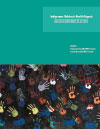 Indigenous Children's Health Report: Health Assessment in Action (pdf) Indigenous Children's Health Report: Health Assessment in Action (pdf) 
REPORT, ed. Janet Smylie and Paul Adomako This report documents what we know about the health of Indigenous children (from birth to age twelve) and evaluates the quality of Indigenous child health data collection in Canada, Australia, New Zealand, and the United States. Similar exclusionary social policies active in all four countries are at the root of these profound and unjust differences in child health.
|
 |
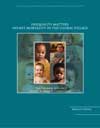 Inequality Matters: Infant Mortality in the Global Village Inequality Matters: Infant Mortality in the Global Village 
REPORT by Ronald David, from the Joint Center Health Policy Institute, 2008 This background paper seeks to expand our understanding of the causes and effects of infant mortality within a broader global context. It offers comparisons between infant mortality in the U.S. and in other nations across the globe, providing a compassionate examination of the impact of social and economic inequalities on population health and infant mortality. The author concludes with policy recommendations to help mitigate or eliminate the inequalities that contribute to infant mortality. |
 |
 Insights into Racial and Ethnic Group Differences in Birth Outcomes Insights into Racial and Ethnic Group Differences in Birth Outcomes 
A presentation by Dr. James W. Collins, Jr. Dr. Collins' presentation surveys the level of infant mortality in the United States and identifies factors that contribute to the US' high rate of infant mortality. Among these factors are cumulative, transgenerational factors: conditions, and environments replicas relogios experienced by one generation that relate to the pregnancy outcome of the next generation. These include racism, chronic stress, and poverty.
|
 |
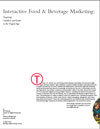 Interactive Food & Beverage Marketing: Targeting Children and Youth in the Digital Age (pdf) Interactive Food & Beverage Marketing: Targeting Children and Youth in the Digital Age (pdf) 
REPORT from the Berkeley Media Studie Group
This report looks at the practices of food and beverage industry marketers in reaching the youth of America - specifically African American and Lation youth - via digital videos, cell phones and interactive games and social networking sites. The piece also provides recommended steps to limit marketing to children and adolescents so that today's media culture can "serve the health of our children rather than undermine it."
|
 |
 Jack Shonkoff Interview (mp3) Jack Shonkoff Interview (mp3) 
PODCAST, Web-exclusive content from UNNATURAL CAUSES In this original interview, Dr. Jack Shonkoff, director of the Center on the Developing Child at Harvard University, discusses the importance of early childhood experiences on life-long health, learning, and success. He describes the effect of toxic stress on brain development, and asserts that we have a moral and economic incentive to provide the best environments for all children or pay the price later in the form of reduced productivity and the burden of chronic disease.
ENHANCED PODCAST (m4a) |
 |
 Jack Shonkoff Interview (pdf) Jack Shonkoff Interview (pdf) 
EDITED INTERVIEW TRANSCRIPT, Web-exclusive content from UNNATURAL CAUSES In this original interview, Dr. Jack Shonkoff, director of the Center on the Developing Child at Harvard University, discusses the importance of early childhood experiences on life-long health, learning, and success. He describes the effect of toxic stress on brain development, and asserts that we have a moral and economic incentive to provide the best environments for all children or pay the price later in the form of reduced productivity and the burden of chronic disease. |
 |
 KIDS COUNT Data Center KIDS COUNT Data Center 
DATABASE created by The Annie E. Casey Foundation A database system that contains state- and city-level data for over 100 measures of child well-being. This easy-to-use, powerful online database allows you to generate custom reports for a geographic area (Profiles) or to compare areas on a topic (Ranking, Maps, and Line Graphs).
2023 Audemars Piguet Replica Watches UK
1:1 fake rolex uk |
 |
 Labor Project for Working Families Labor Project for Working Families 
WEB SITE Since 1992, the Labor Project for Working Families has been partnering with unions, union members, community based organizations and other activists to promote better work and family policies and programs, including paid family leave, child care, elder care and flexible work schedules. Their efforst include: educating unions about work/family initiatives; advocating public policies for working families; and promoting innovation and partnership between unions and communities.
patek philippe repliky |
 |
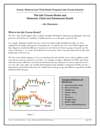 Life Course Model (pdf) Life Course Model (pdf) 
ARTICLE from Family, Maternal, and Child Health Programs, Contra Costa Health Services A two-page pdf with a clear, brief overview of the Life Course Model, along with a list of references to learn more. The Life Course Model suggests that a complex interplay of biological, behavioral, psychological, and social protective and risk factors contributes to health outcomes across the span of a person’s life. |
 |
 Making Early Childhood Count Making Early Childhood Count 
Canadian Medical Association Regardless of the industrialized country studied, all data to date reveal that most children at every socio-economic level are remarkably similar at birth. However, inequalities in development emerge early in childhood, usually before school entry. It is imperative for governments to provide universal, affordable access to effective early childhood programs starting in the first few years of life, to improve the experiences of all young children as well as those who are most vulnerable. Along with these interventions, an effective measurement system is required. The 4 approaches discussed here are the building blocks. |
 |
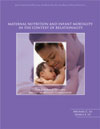 Maternal Nutrition and Infant Mortality in the Context of Relationality Maternal Nutrition and Infant Mortality in the Context of Relationality 
REPORT by Michael C. Lu and Jessica S. Lu, from the Health Policy Institute, 2007 This background paper explores the relationship between maternal nutrition and infant mortality. It provides an analysis of the relationship between maternal nutrition and leading causes of infant mortality, as well as maternal, infant, and child health; an overview of the nutritional status and behaviors of pregnant women in the U.S.; and a comprehensive review of the effectiveness of nutritional supplementation programs in pregnancy. The final chapters reframe the relationship between maternal nutrition and infant mortality within the context of relationality over the life course and offer related recommendations for research, policy, and practice. |
 |
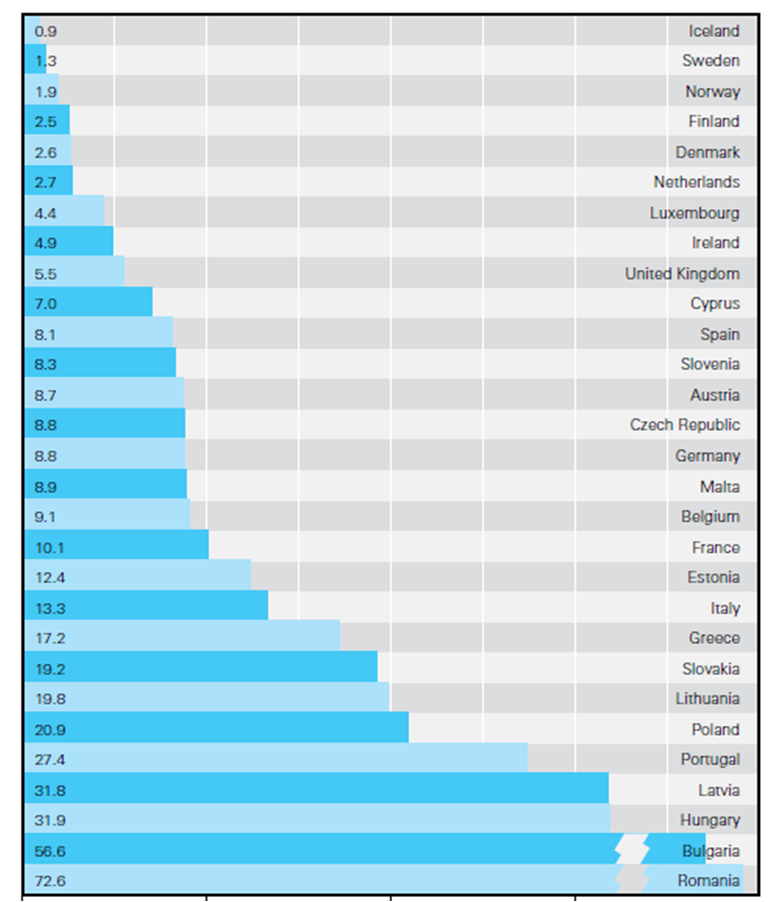 Measuring Child Poverty: Innocenti Report Card 10 (pdf) Measuring Child Poverty: Innocenti Report Card 10 (pdf) 
CHARTS from Innocenti Research Centre Report Card 10, page 3 (fig. 1B)
The Report Card series is designed to monitor and compare the performance of economically advanced countries in securing the rights of their children. This report sets out the latest internationally comparable data on child deprivation and relative child poverty. |
 |
 Mental health hits home: Is America driving you crazy and then killing you? Mental health hits home: Is America driving you crazy and then killing you? 
ESSAY by Stephen Bezruchka University of Washington professor and emergency room doctor Bezruchka considers how social and economic factors contribute to astronomical rates of mental illness in the U.S., particularly among children. |
 |
 MomsRising.org MomsRising.org 
WEB SITE An online, grassroots movement working for mandatory paid maternity and paternity leave, open flexible work, healthcare for all kids, excellent childcare, realistic and fair wages, and healthy afterschool options for all children. |
 |
 Moving upstream: Working together to create healthier communities Moving upstream: Working together to create healthier communities 
DVD and REPORT, Blue Cross and Blue Shield of Minnesota Foundation In 2006, the Blue Cross and Blue Shield Foundation hosted a statewide policy forum on social determinants of health. Minnesota leaders in health, housing, early childhood development, environment, government, nonprofit and philanthropy gathered to discuss how these different sectors can work together to improve community health. Nationally acclaimed speakers - including UNNATURAL CAUSES featured scholars Ichiro Kawachi, Camara Jones, and Jim Krieger - shared research and ideas for focusing efforts “upstream,” on social, economic and environmental factors that influence health.
The 3-DVD set and/or print materials on the proceedings are available to organizations free of charge. |
 |
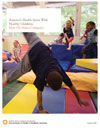 National Child Health Chartbook (pdf) National Child Health Chartbook (pdf) 
CHARTBOOK from the RWJF Commission to Build a Healthier America, October 2008 This chartbook, America's Health Starts With Healthy Children: How Do States Compare?, examines the health of children from different socioeconomic backgrounds in every state to document how healthy our nation's children are now and how healthy they could be if we as a nation were realizing our full health potential.
replicas de relogios hublot
Also see the National Adult Health Chartbook (pdf)
|
 |
 National Infant Mortality Awareness Month Toolkit 2010 National Infant Mortality Awareness Month Toolkit 2010 
The National Healthy Start Association Communities can use the InfantMortality Awareness Toolkit to promote awareness of the high infantmortality rate that exists in the United States and the need to reduce it. This toolkit can easily be adapted by communities, local public health departments and other organizations dedicated to reducing the alarming statistics. The toolkit contains ideas for fundraising activities, advocacy, useful statistics, as well as tips forworking with the media, public relations, and marketing. |
 |
| « Prev 1 | 2 | 3 | 4 Next » |
|




